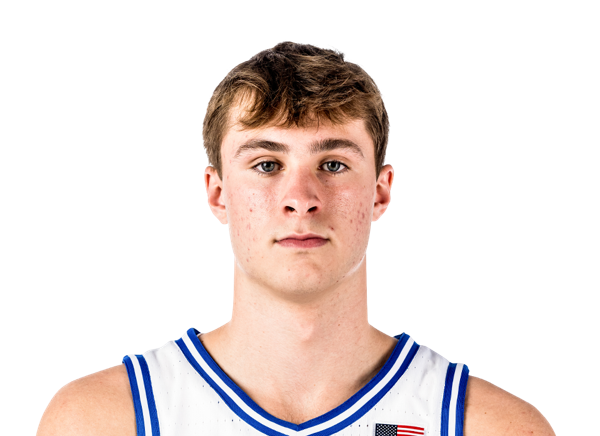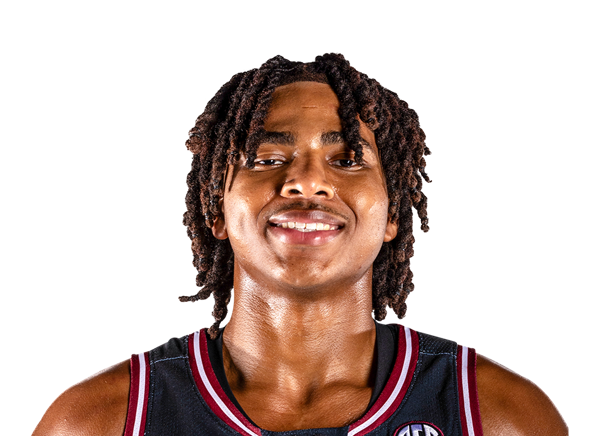Full Analysis
Offense
Dylan Harper operates with a mature, nuanced offensive game far beyond his years. His hallmark skill is his ability to get into the paint and finish with elite touch, craft, and control. Harper scored an exceptional 66% at the rim, and 73.3% in the restricted area, production that’s rare even for rim-running bigs, let alone a 6'4" guard. What makes this even more impressive is that nearly all of these looks were self-created, a testament to his footwork, strength, and ability to manipulate defenders with subtle hesitations, Euro-steps, and changes of pace.
Harper lacks burst or vertical pop, but he mitigates this with a polished handle and excellent feel. He thrives in pick-and-roll scenarios, splitting hedges with ease and using his strength and hips to carve out slivers of space. Once he has a defender on his hip, he controls tempo like a veteran, manipulating help defenders before making live-dribble reads. His passing is instinctive and effective, he isn’t an elite playmaker, but he consistently delivers accurate kickouts, lobs, and dump-offs that generate efficient looks. With 4 assists to 2.4 turnovers per game on high usage, Harper has shown strong decision-making under pressure.
As a shooter, Harper is a mixed bag. He’s a willing shooter off the catch (36.8% on catch-and-shoot 3s), with better mechanics and confidence in unguarded situations (47.8%) than when tightly contested (26.1%). His off-the-dribble shooting is the main concern, as he converted just 29.2% of his pull-up 3s and 26.3% of his pull-up 2s. His form can look compact but inconsistent, especially under pressure or late in the clock, where arc and touch sometimes waver. The volume is encouraging, but he’ll need to make real strides here to reach his offensive ceiling as a lead initiator.
Despite the shaky pull-up numbers, Harper’s feel as a creator, his ability to generate rim pressure, and his body control in tight spaces give him a high offensive floor. He profiles as a high-usage ballhandler capable of both scoring and facilitating, especially if surrounded by competent shooters and vertical threats.
Defense
Harper’s defense is not yet a strength, but his physical tools and instincts offer room for optimism. With a 6’10” wingspan and a sturdy 213-pound frame, he has the size to guard both backcourt spots and potentially switch onto smaller wings. He’s shown flashes of solid on-ball containment, using his strength to absorb contact and his length to disrupt passing lanes. His 2.1 STL% and 1.6 BLK% indicate decent defensive activity for a freshman with a heavy offensive workload.
That said, his technique and consistency are works in progress. Harper can be upright in his stance, leading to issues with lateral quickness, especially when defending quicker guards. Off the ball, he occasionally loses focus or gets caught ball-watching, though he’s also made smart rotations as a low man and has shown an understanding of positioning. His screen navigation and closeouts can be inconsistent, and quicker guards will likely attack him early in his NBA career.
Effort waxed and waned at Rutgers, which was understandable given his offensive burden and the team’s struggles. However, he has the frame and instincts to become a serviceable, possibly even above-average, defender at the next level, especially in a switching scheme or when defending bigger guards and wings.
Looking Ahead
Dylan Harper is a complex prospect with an NBA-ready body and playstyle paired with real questions about athleticism and shooting. His floor is relatively high for a teenage guard because of how well he reads the game, manipulates defenses, and gets to the rim. He doesn’t need blazing speed or elite bounce because he plays with pace, patience, and physicality. If the jumper improves, and there’s reason to believe it can, he could become a reliable primary option or a highly valuable secondary creator.
The main developmental questions revolve around three areas: (1) Can he improve his pull-up shooting enough to prevent defenders from going under screens and clogging the paint? (2) Can he sharpen his handle and decision-making under heavy defensive pressure? (3) Will he commit to becoming a plus defender, especially off-ball?
At worst, Harper projects as a physically strong, smart connector who can handle secondary playmaking duties and offer lineup flexibility. But in a best-case scenario, where his jumper becomes average and his defense steadies, he could be the offensive engine of a playoff team. Whether he leans more toward the latter will depend on his jumper and his ability to command defenses without top-end athletic tools.
Harper may not blow the doors off in pre-draft workouts, but teams that value basketball IQ, creation craft, and physicality in a guard will see a building block. For a team like San Antonio, especially if paired with shooters and the vertical threat that is Wembenyama, he could be the stabilizing force that allows the offense to hum.



